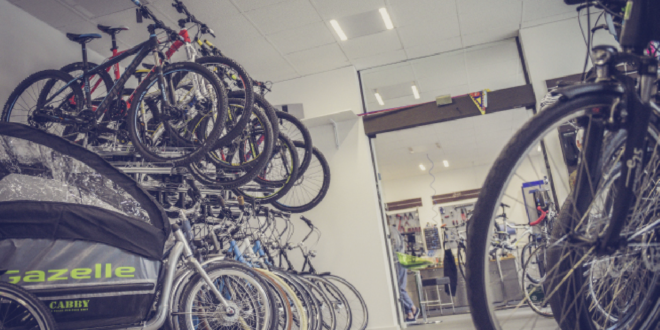In April, the Bicycle Association launched a ‘Trade Network’ to connect independent bike shops with its advocacy work and support programmes. BikeBiz caught up with BA data analyst consultant John Styles to find out more.
How long has this service been in the works?
The UK cycle industry has talked about market data for many decades. It’s chilling to think that, in 2019, nobody involved in our sector really knows much outside of their own sales figures. The Market Data Service has been in planning and preparation for nearly two years at the Bicycle Association, following discussions with our Leadership Group, where it was clear there was a real need for this insight. The initiative has been led by Simon Irons, formerly head of cycling at Halfords and Sports Marketing Surveys Inc (SMS), which is a leading global sports research organisation. Launching this service has been possible thanks to the support of our membership, including large retailers, brand and distributors – who are all committed to its success.
How in-depth is the data?
The data – when it comes to retailers – contains nothing that identifies their business. All retailer data is anonymised and is held securely by SMS. You can’t see what other stores are up to (and neither can the Bicycle Association or anyone else). When it comes to SKUs, the data is just as detailed as the retailers’ EPOS system (as long as it’s not owned or exclusive brands, which will not be visible). This means that, for the first time, we will be able to report volume and value sales on not just bikes, but parts, accessories, clothing and services. So, for example, if a retailer wishes to look at his own performance in just saddle sales versus a regional or national picture, they can. Most retailers won’t wish to look in quite that level of detail, but they’ll be able to look at performance in key categories for their business, and see if they need to grow their range, adjust pricing or introduce promotions. They could also look at how key brands (which they may or may not stock) are performing against each other, both locally and nationally.
How did the Bicycle Association go about keeping this service low-cost? How will it cover those costs?
The Bicycle Association is a not-for-profit organisation which represents all parts of the industry. In line with this, we are seeking to cover our costs and no more. If the number of users grows, the charges will fall. Most of the retailer users of the system will pay nothing. It is entirely free for IBDs with a turnover lower than £5 million, which represents the majority of stores. Larger retailers will pay a fee according to their turnover (these costs are detailed on our website). We believe the many benefits that access to accurate sales-out-data will bring will far outweigh any costs involved.
Now that the infrastructure has been put in place, how much of a role will the BA continue to play? To what extent will the work now fall upon SMS?
The Bicycle Association will oversee the service and be responsible for retail training, case studies and sharing best practice so that all users of the service will get the most out of it. SMS will be responsible for collecting the data, populating and managing the database and issuing updated information on a monthly basis. The Bicycle Association is dedicated to making the service usable and accessible to all and with this in mind – and to support retailers and service users – has brought on board an industry veteran (me) to work alongside Simon Irons and SMS.
Are you able to talk about which retailers/brands/distributors are involved, and if so, what their thoughts are on the project?
150 IBDs have so far signed up to the service, alongside the biggest retailers in the industry. We are in active discussions with many others and would urge retailers to get on board and ensure the success of this important initiative. Many of the UK’s biggest brands and suppliers are supporting us including Brompton, Frog, Isla Bikes, Moore Large, Raleigh, Schwalbe, Specialized, Trek, ZyroFisher and others. All of these businesses recognise that, as an industry, we are stronger knowing exactly what our market looks like. They are aware that our sector faces many significant challenges, and that good data has a role to play in helping to address these.
What has the reaction been like so far?
The reaction so far has been very positive. Everybody is aware of the challenges in implementing such an initiative and guaranteeing retailer anonymity has been crucial. Not every conversation we have had over the last two years has been easy but we believe that the industry is grateful to see such a service implemented after many failed attempts over a long period of time.
Could you give a clear outline of your tiering system (silver, gold etc)?
There are four levels of service. The standard service – offered to IBDs with a turnover of less than £5 million – is free of charge and gives them a summary of the market at a national level as well as their own sales data cleansed and analysed versus the market and their specific region. For IBDs which do not have the time and resources to analyse their own sales data, this service may be of significant benefit. At Bronze level, users of the service get quarterly and 12 monthly fixed reporting vs prior year and prior quarter with analysis and commentary. This provides market value and volume sales at channel, category and brand level. The Silver level adds access to a dynamic dashboard, with data available at sub-category, sales channel and by price. Finally, Gold level adds analysis at SKU level and by any one of seven UK regions.
What are your plans for this project for 2020 and beyond?
As the project develops, we expect the biggest value to be to retailers, in helping them understand their performance versus the market. It could also help them select brands and product ranges to boost sales and net margins. The second group who will benefit substantially are brands and distributors. They will start mining the data to import more of the goods that the trade does need, and less of the surplus goods that it doesn’t. We shouldn’t forget that the data forms part of the Bicycle Association’s national picture which is used for leveraging advocacy work with Government. We are also connecting to a number of organisations who can help us build the case for cycling. By connecting the sales-out-data back to initiatives such as infrastructure, cycle to work schemes, cycle training and such like, we can start to see where advocacy work leads to a real upswing in sales at the till.
We can also start to answer some of the ‘unanswered industry questions’, such as how deep is the ‘winter sales drop’ versus summer sales? Is there a direct relationship between more-servicing-when-bikes-sales-are-slow or is it more random? Or perhaps – do bike share schemes increase or decrease the private purchase of bicycles in any given area? Right now, nobody knows. To give an example, at a recent Bicycle Association meeting we held a ‘jelly-bean-jar’ poll of 30 industry experts from leading wholesalers. How big is the e-bike market in the UK (by value), we asked them. Estimates ranged from 2.5% to 27%. Nobody knew for sure. And that’s the point: when the data comes in, we’ll know.
 BikeBiz Bicycle and cycling retail news
BikeBiz Bicycle and cycling retail news




